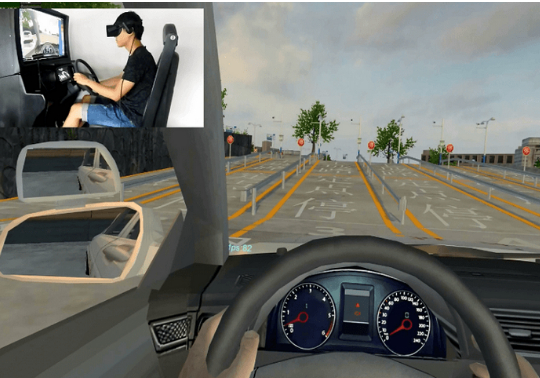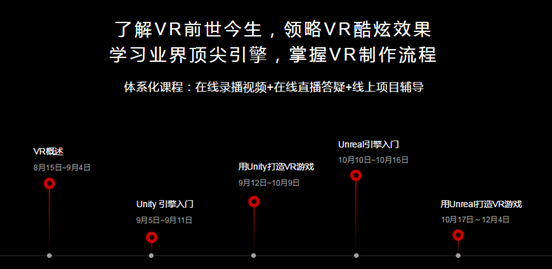If Facebook buys Oculus for $2 billion in 2014 and makes VR the industry's first focus, then 2016 will definitely be an explosive node in the history of VR industry development. Frequent VR-related reports have appeared in mainstream technology media. Major IT companies have demonstrated more or less ambitions for VR, consumer eagerness, investment additions, market climbs, and the release of various industry analysis reports. All of them indicate the enthusiasm of the VR industry.
At the same time, a large number of "VR+" markets have emerged in applications such as games, video, live broadcast, education, and medical care, driving the continuation of the VR boom. Especially in the field of online education, the addition of VR technology has made the presentation of online education more diversified, and also provided a new development direction. So, how many games do you currently have in VR+ Education?
First, use VR technology to provide immersive scene learning
Online education products use existing VR technology and VR hardware to provide learners with more immersive learning materials. From the current point of view, this is the most common form of “VR+ teachingâ€. At the end of 2015, LeTV Education and Comprehensive Education Group New Oriental reached a preliminary cooperation intention. Both parties will realize VR teaching in English class. LV hardware will be provided by LeTV, and teaching resources will be provided by New Oriental to complement each other to create experiential classroom. This is the typical use of VR technology. Cases that enhance the learning experience.

Recently, IT giant Google has also integrated TES with the teaching materials and course plans for teachers. With the Google Cardboard virtual reality platform, it provides students with a more immersive teaching environment through 360-degree media content. At the same time, VR technology also It can provide clearer image data than ordinary textbooks, especially for younger students.
Second, the use of VR technology to provide "real operation" opportunities in the virtual environment
"Presence in the field", this is a major feature of VR technology. VR technology uses algorithms, special effects, etc., to enable users to feel immersive in the virtual environment, and this kind of realistic experience can be applied to skill training if it is slightly improved, and learning the car may be the most suitable. Training programs using VR technology. "The best VR technology is that you can't distinguish between virtual and reality." This sentence cannot be overestimated in VR+ practical skills.

Driving a school car may be a rare life experience that everyone will spit out: a coach with too many people, less practice time; winter trainers are cold, summer training is too hot; coach attitude is poor; never went through the real road... ... Speaking of the history of learning cars, everyone can say a bitter tears. However, if the VR technology can be combined with related hardware to provide a simulated real driving environment, the user's learning time can be effectively guaranteed by changing the user's physical movements and changing the driving trajectory of the virtual vehicle. In addition, conversational products such as foreign language spoken language learning are also suitable for VR technology to improve the teaching environment and enhance interactivity.
Third, cultivate VR application talents
Both of the above methods use VR technology to improve the teaching experience, but have never noticed the talent gap in the VR industry. Although the scale of China's VR market has risen from 1.54 billion to 5.66 billion yuan in 2016, the salary level of middle and senior engineers has reached 300,000-500,000/year, but the output of VR talents is not optimistic. Domestic universities and colleges have not yet opened VR majors, even VR courses are rare, and the VR closed training courses launched by teaching institutions are basically tens of thousands, and there are no shortage of high prices of 30,000 or 50,000, and the people are too low.

There is a market for demand, and Netease Cloud Class, a well-known online education platform in China, has seized this opportunity. In June 2016, Netease Cloud Classroom teamed up with GA Game Education to jointly create the first online vocational education course focusing on VR games in China – “VR Game Designer†micro-professional, creating a talent training base for professional VR game designers for the industry. . "VR Game Designer" micro-professional from the birth of VR technology, with real cases, a complete introduction to how to use the Unity engine, Unreal engine, VR glasses, etc. to create a VR game, the learning cycle for a total of four months. In order to take care of zero-based users, the "VR Game Designer" micro-professional deliberately weakened the programming language part of the curriculum, and invited former technology companies such as Blizzard and Tencent to participate in the lectures. It is worth noting that this micro-professional discount currently only needs 1998 yuan, compared with similar million-level courses, the cost performance is extremely high.
Thomas Furness, known as the "father of virtual reality", said in an interview that the most likely change in VR in the short term is in the field of education. Indeed, from the beginning of the VR outbreak to the present, but half a year, but "VR + education" has already flourished. Of course, this is only the initial stage of the development of the VR industry. In the future, there will be new ways to open "VR+ Education". We may wait and see.
Whether you`re looking to create a relaxing living room with plenty of storage to hide your clutter, or want tips on how to renew with easy style updates, you`ll find plenty of ideas with us to get you started.
Living Room Furniture,Tv Stand Cabinet,Tall Media Cabinet,Display Bookcase Cabinet
HOPE IKEA , https://www.skywardrobes.com